|
|
|
|
|
|
Web Resources |
Web Resources (Alphabetical by Title)
 Ecclesiastical Ireland Ecclesiastical Ireland
A "sister" site to F.J. & K.D. Schorr's main site, Irish Round Towers, designed to hold the many photos of the many Irish churches and abbeys they have visited. Most pages have numerous "clickable" thumbnails producing 1024x780 versions. Included are detailed driving instructions to each site. Other sites by F.J. & K.D. Schorr: Irish Irish High Crosses, Ancient Ireland, focusing on ancient Irish antiquities, and Irish Castles. 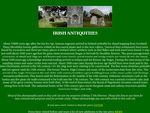 Irish Antiquities Irish Antiquities
A terrific site by a knowledgeable and informed author-photographer, Brian T. McElherron, who has visited a plethora of both early Christian and megalithic sites (and a few not so early historical sites) in all Irish counties. Included is a valuable Glossary of Architectural Terms. McElherron, who has been photographing sites since 1975, also has two other websites worth visiting: another ecclesiastical site, The Churches of County Armagh, and also a website with both early christian and megalithic sites, The Stone Circle.  Heritage Ireland Heritage Ireland
Many of Ireland's pre-historical and historical sites -- almost 800 as of May 2007 -- are under the care of the State.This useful site introduces you to those built heritage sites (managed, maintained, and presented by the Office of Public Works - OPW) and those natural heritage sites (managed, conserved, and presented by the National Parks & Wildlife Service - NPWS). Each site listed gives much useful information -- location, opening times, admission charges -- for visitors. 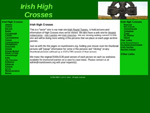 Irish High Crosses Irish High Crosses
A "sister" site to F.J. & K.D. Schorr's main site, Irish Round Towers, designed to hold the many photos of the many Irish high crosses they have visited. Most pages have numerous "clickable" thumbnails producing 1024x780 versions. Included are detailed driving instructions to each site. Other sites by F.J. & K.D. Schorr: Ecclesiastical Ireland, Ancient Ireland, focusing on ancient Irish antiquities, and Irish Castles.  Irish Round Towers Irish Round Towers
F.J. & K.D. Schorr's main site, designed to hold the many photos of the many Irish round towers they have visited. According to the authors: "On our first trip to Ireland, we saw our first round tower...and on our last trip we actively sought them out. It has become a sort of quest. What this website IS all about, is to share our photographs and some of the information...on the round towers we have visited. Each one has unique features and many have additional interesting antiquities..."  Monastic Ireland Monastic Ireland
Between the 5th and 8th centuries, there was a remarkable flourishing of Celtic Christianity. Monastic Ireland brings to life the stories of the Celtic saints, their vibrant spirit and the places associated with them. A subsite of the Catholic Ireland website, it relates the stories of nine famous monastic sites in present-day Ireland and Northern Ireland and the principal saints associated with each one. Mystical Ireland The new September 2022 Mythical Ireland website. Mythical Ireland was established in March of the year 2000 by author, journalist, astronomer, and photographer Anthony Murphy. The website represents a journey into the ancient past, casting new light on the early history of Ireland. This exploration takes place through many different disciplines, including archaeology, anthropology, astronomy, mythology, spirituality, and genetics.  New Advent Catholic Encyclopedia New Advent Catholic Encyclopedia
More than 11,000 articles on Catholic topics, including biographies of saints, monasteries, abbeys, churches, monastic orders, monastic schools of learning, among other essential topics. Not limited strictly to ecclesiastical issues, it records all that Catholics have done, not only in behalf of charity and morals, but also for the intellectual and artistic development of mankind, chronicling what Catholic artists, educators, poets, scientists and men of action have achieved.  Orthodox Wiki Orthodox Wiki
OrthodoxWiki is a free-content encyclopedia and information center for Orthodox Christianity that anyone can edit. The English version was started in November 2004. OrthodoxWiki is not affiliated with Wikipedia. The chief and founding administrator is Fr. John, a priest of the Orthodox Church in America (OCA). The purpose of OrthodoxWiki is to present an encyclopedia of Orthodox Christianity as represented by the mainstream Chalcedonian churches ("Eastern Orthodox").  Wikipedia Wikipedia
Wikipedia -- from wiki (a type of collaborative website) and encyclopedia -- is a multilingual, web-based, free content encyclopedia project written collaboratively by volunteers that currently ranks among the top ten most-visited websites worldwide.The vast majority of its articles can be edited by anyone with access to the Internet. Contains several hundred useful pages on specific saints, holy sites, churches, monasteries, abbeys, among others, which are most useful to this website. Print Resources (Alphabetical by Author)  Thomas Cahill Thomas CahillHow the Irish Saved Civilization New York: Anchor Books, 1996 The main value of this work is that it was and still is for many their first introduction to the early Christian period in Ireland. Cahill is an entertaining writer, if at times "too cute" and self-conscious of his "brilliance," particularly noticeable in his latest works in his Hinges of History books. 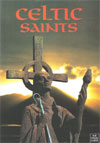 Dana Delap Dana DelapCeltic Saints Andover, Hampshire: Pitkin Guides, n.d. This small pamphlet traces the Celtic Saints from Ireland to Northumbria, Whitby, Wales, and Europe. It traces the origins of Celtic Christianity and has a chapters on the monastic vocation and the Celtic inheritance. Included is a useful list of the major saints and a map showing the locations of Celtic Christian sites. 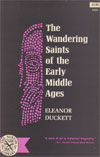 Eleanor Shipley Duckett Eleanor Shipley DuckettThe Wandering Saints of the Early Middle Ages New York: Norton, 1964 An excellent book on the wayfaring Celtic Saints in Ireland, Scotland, Wales, England, and Brittany in the 5th, 6th, and 7th centuries, including chapters on Celtic missionaries in the 6th, 7th, 8th, and 9th centuries to Switzerland, Italy, France, Belgium, the Netherlands, Germany, Denmark, and Sweden.  Failte Ireland and Northern Ireland Tourist Board Failte Ireland and Northern Ireland Tourist BoardIreland's Christian Heritage: Ireland, the Island of Saints and Scholars Dublin and Belfast, 2006 Produced by Fáilte Ireland in conjunction with the Northern Ireland Tourist Board, this tourism brochure is an excellent introduction to Ireland’s wealth of monastic sites, high crosses, and early Christian artefacts. There is also a useful section on Irish saints and missionaries. As with Cahill's work, however, it too perpetuates many myths regarding St. Patrick, perhaps forgiveable as the pamphlet is to promote tourism and widely-held ideas about Ireland.  David Hugh Farmer David Hugh FarmerThe Oxford Dictionary of Saints New York: Oxford University Press, 2005 ed. More than 1,300 saints are profiled in this most readable, extensive, and indispensable reference work. Farmer's compilation of saints includes all English saints, all saints of whom there is or was a notable cult, and well-known and lesser-known saints from Ireland, Scotland, Wales, and the rest of Europe. A most useful appendix of the principal patronages of saints, plus an index of the main iconographical emblems of saints, another of places, and a calendar of feast days is included. 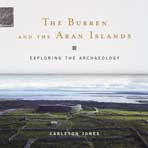 Carleton Jones Carleton JonesThe Burren and the Aran Islands: Exploring the Archaeology Cork City: The Collins Press, 2006 ed. An excellent well-written study of the archaeology of the Burren and the Aran Islands, including major and minor megalithic sites as well as the sites of early Christianity in these two regions. Jones, a professor of archaeology at the National University of Ireland in Galway presents in-depth accounts of each site and conveys the most current archaeological research and excavations for the reader. With 240 photos and illustrations and numerous explorer maps, this book is an indispensable guide for those exploring these two regions. 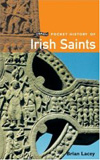 Brian Lacey Brian LaceyO'Brien Pocket History of Irish Saints Dublin: The O'Brien Press, 2003 This chronicle of 100 of the best-known and most influential Irish saints from before Saint Patrick (approximately 400 AD) to Oliver Plunkett (1681 AD), incorporates folklore, songs, and tales of miracles. The feast days, blessings and curses, relics, and traditions attributed to the various saints are discussed. Some profiles contain lyrics and quotes from primary and secondary sources. Also included are the incorporation of religious figures into Irish life through place names, the naming of topography and feast days, the production of hagiography, and contemporary studies of the lives and roles of saints. A historical overview of Christianity in Ireland is provided.  Des Lavelle Des LavelleThe Skellig Story: Ancient Monastic Outpost Dublin: The O'Brien Press, 2006 ed. The story of two of the world's most stunning and unspoilt islands,Skellig Michael and Small Skellig, which lie off the coast of County Kerry. Lavelle, a boatman, photographer, and author who has taken thousands of visitors to the stunning Skellig Islands through the years, explores the extraordinary, isolated Early Christian monastic settlement with its stone beehive huts. He describes the abundant bird life, including the huge colony of gannets, and tells of the monastic and other history, legend, geology, plant life, the lighthouse, the seals, and the underwater world.  Clodagh Lynch and Olive Carey Clodagh Lynch and Olive CareyRian na Manach: A Guided Tour of the Ecclesiastical Treasure in Co. Clare Ennis: Clare County Council, 2007 The results of a comprehensive audit of Early Christian, Medieval, and Celtic ecclesiastical buildings in County Clare, Rian na Manach ("Pathway of the Saints") provides background historical, architectural, and archaeological information to 33 of the audited sites, as well as access and directional knowledge for visitors. The book is organized into four parts grouping churches by geographical location. Also included is a fold out map and a reading list.  Steve MacDonogh Steve MacDonoghThe Dingle Peninsula Dingle: Brandon Books, 2000 ed. Complete with 70 photographs, MacDonogh's book is an indispensable tool when exploring the Dingle Peninsula. While giving the reader a history of each of the Peninsula's areas, it also gives precise instructions on how to find the many sites described, particularly useful for those seeking to find the ecclesiastical and archaeological sites described in the book. In addition, MacDonogh gives detailed of its coastline, mountains, people, and seasons. Author MacDonogh is the Editorial Director of the fine Irish publishing house, Brandon Books. 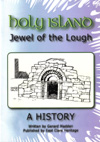 Gerard Madden Gerard MaddenHoly Island, Jewel of the Lough: A History Tuamgraney: East Clare Heritage, 2004 ed. This small but valuable pamphlet tells the history of this island in Lough Derg, the largest of the great lakes of the River Shannon. Written by Madden who takes visitors to the island in his small motorboat, it discusses Holy Island's founders and offers a detailed tour of the monastic buildings and other sites found on the island today.Additional information on the pamphlet.  Robert Meagher and Elizabeth Parker Neave Robert Meagher and Elizabeth Parker NeaveAncient Ireland: An Explorer's Guide Northhampton, Massachusetts: Interlink Books, 2004 A guidebook to Ireland's spectacular antiquities -- its passage tombs, ring forts, castles, Neolithic settlements, and monastic sites, among others. Along with fascinating overviews of prehistoric, Celtic, early Christian, and early medieval times, Meagher Neave give the traveler concrete help in finding the most stunning sites that preserve and breathe that history today. Organized around three itineraries with recommendations for bed and board with a useful chapter on "Getting Acquainted with Ancient Ireland."  Cary Meehan Cary MeehanThe Traveller's Guide to Sacred Ireland: A Guide to the Sacred Places of Ireland, Her Legends, Folklore and People Glastonbury, Somerset: Gothic Image Publications, 2004 This amazing book is the result of years of research of historical and archeological detail, legend and folklore, and current information on earth energies for each sacred site. Before the author's rediscoveries, most of the vast number of ancient sites were unknown or almost forgotten except by locals. Features: simple wells and stones, local pilgrimage spots, holy mountains, lakes and rivers, pre-Celtic Temples, and ancient churches and round towers.  Geoffrey Moorhouse Geoffrey MoorhouseSun Dancing: A Vision of Medieval Ireland New York: Harcourt Brace & Company, 1997 Moorhouse's re-creation of monastery life in medieval Ireland is half fiction and half history. The fiction consists of stories, dated from 588 to 1222, about the activities of individual monks on Skellig Michael, an island of terrifying austerity and awesome isolation. The history covers the wide-ranging and sophisticated connections of early Irish Christianity, the influence of Irish scholarship on the European mainland, the surviving effects of pagan mythology, and other topics.  Dara O'Maoildhia Dara O'MaoildhiaA Pocket Guide to Arainn: Legends in the Landscape Inishmore, Aran: Aisling Arainn, 2002 ed. A handy pocket-size guidebook for "the questor, the searcher, the pilgrim, the spiritually hungry and those on a journey" for finding the many Celtic and Christian sites on Inishmore, Aran's largest island. Divided by the island's regions, each chapter of this valuable guide relates the myths, legends, folklore, and history of each site with many illustrations by Gay McCarron. 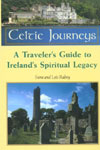 Steve and Lois Mowday Rabey Steve and Lois Mowday RabeyCeltic Journey: A Traveler's Guide to Ireland's Spiritual Legacy New York: Citadel Press, 2001 A visit to the pre-historical -- Newgrange, Poulnabrone, Dun Aengus, among others -- and early Christian -- Glendalough, Rock of Cashel, Skellig Michael, among others -- sites in Ireland, the authors add helpful and practical information for the journey. In addition, the authors add some contemporary, quintessentially Irish locations. 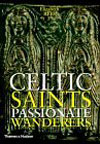 Elizabeth Rees Elizabeth ReesCeltic Saints: Passionate Wanderers NY: Thames & Hudson, 2000 Using archaeological and literary evidence, Elizabeth Rees presents the fascinating stories of some of the best known Celtic saints--St. Patrick and St. Bridget in Ireland, St. David in Wales, St. Columba in Scotland, and St. Aidan and St. Cuthbert in Northumbria--as well as lesser-known monks, nuns, missionaries, and martyrs. From St. Michael's Mount in the south to Iona and Lindisfarne in the north, the author takes us on a spiritual tour of the sacred places where the saints chose to pray, preach, and study.  James Charles Roy James Charles RoyThe Road Wet, the Wind Close: Celtic Ireland Chester Springs, Pennsylvania: Dufour Editions, 1987 By far the best book on ancient and early Christian Ireland, this work explores early Irish history from the island's first inhabitants around 7000 B.C. to the Norman invasion of 1169 A.D. This beautifully written, highly evocative work takes an innovative approach to Irish histoy, one that is fitting for a land where the past never dies. Particularly important for its discussion of the controversies surrounding St. Patrick and the oft-neglected importance of St. Columba (Columcille).  James Charles Roy James Charles RoyIslands of Storm: Eileain Annraidh Chester Springs, Pennsylvania: Dufour Editions, 1991 In this excellent book, Roy continues his exploration of ancient Ireland. He visits two islands off the coast of Western Ireland -- Inishmurray and Inishkea North --and another off Scotland -- Iona -- in order to examine Celtic Christianity through the ruins of buildings established by ancient monks and hermits. Roy provides a broad view of the history of Christianity starting in the Holy Land, thus placing the Celtic ruins and their past inhabitants into a larger historical perspective.  Katharine Scherman Katharine SchermanThe Flowering of Ireland: Saints, Scholars and Kings Boston: Little, Brown, 1981 In the early Middle Ages, when European scholarship was buried beneath centuries of barbarism, Ireland became the seat of an extraordinary literary, artistic, and cultural blossoming. This book traces the era between the 5th and 12th centuries when Ireland became the repository of classical Western civilization. Examining the meeting of two disparate cultures, the pagan Celts and the Christian saints and scholars, the author discusses how illuminated manuscripts, monastic libraries, and Romanesque churches preserved culture until the rest of Europe awakened from the Dark Ages. Other Resources:DVDs In Search of Ancient Ireland DVD 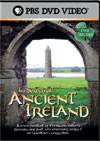 This video traces the history and legends of ancient Ireland. Beginning in 2000 B.C. -- when Stone Age farmers built some of the largest and most spectacular Neolithic monuments in Europe -- the series explores events and stories from millennia of history, to 1167 A.D., when the Norman invasion placed Ireland under control of England's king.
This DVD is divided into 3 parts: Pre-Christian Ireland, Missionary Era Ireland and Ireland Under the Vikings. This video traces the history and legends of ancient Ireland. Beginning in 2000 B.C. -- when Stone Age farmers built some of the largest and most spectacular Neolithic monuments in Europe -- the series explores events and stories from millennia of history, to 1167 A.D., when the Norman invasion placed Ireland under control of England's king.
This DVD is divided into 3 parts: Pre-Christian Ireland, Missionary Era Ireland and Ireland Under the Vikings.
Pillars of Faith: Celtic Saints DVD  Early Christianity took some unusual turns when it reached Ireland. Mostly isolated from the rest of the Christian world, Irish missionaries adapted their teachings to Celtic culture, and the resulting fusion generated uniquely Irish religious art, a monastic experience different from that on the continent, and the preservation of pre-Christian mythology. Pillars of Faith: Celtic Legends details the Irish culture of the time and examines the sweeping effect Christianity had on the people, their culture, and their art. The video traces Irish Christianity back to its earliest historical references. Early Christianity took some unusual turns when it reached Ireland. Mostly isolated from the rest of the Christian world, Irish missionaries adapted their teachings to Celtic culture, and the resulting fusion generated uniquely Irish religious art, a monastic experience different from that on the continent, and the preservation of pre-Christian mythology. Pillars of Faith: Celtic Legends details the Irish culture of the time and examines the sweeping effect Christianity had on the people, their culture, and their art. The video traces Irish Christianity back to its earliest historical references.
The Book of Kells: The Work of Angels DVD  The Book of Kells: The Work of Angels? DVD explores how the greatest Irish Manuscript to survive from the middle ages came to be made on the edge of the then known world. From the intricacies of its minute details to the mastery of the overall design of the great illuminated pages, this film reveals in wonderfully lavish cinematography the glorious achievement of it's artists, scholars and scribes. The Book of Kells: The Work of Angels? DVD explores how the greatest Irish Manuscript to survive from the middle ages came to be made on the edge of the then known world. From the intricacies of its minute details to the mastery of the overall design of the great illuminated pages, this film reveals in wonderfully lavish cinematography the glorious achievement of it's artists, scholars and scribes.
Secrets of the Stones: Decoding Ireland's Lost Past DVD  Episode Two: God's Architects-Beginning of Irish Christianity. Ireland is unique. Isolated on the fringe of the Atlantic it was the last place in Europe to be inhabited .Yet with 150,000 ancient monuments, it holds an unprecedented record of its prehistoric past - a record that has been largely obliterated elsewhere in Europe. Now, cutting edge science is slowly peeling away layers of the secrets lost in time and rewriting Ireland's ancient story. The truth about our distant past is finally emerging. The questions themselves are remarkable: were we almost wiped out 4000 years ago in a climate change event? Why did Ireland, unlike Europe, become Christian so quickly and change religion so peacefully? Originally broadcast on RTYE Cork in 2009. Episode Two: God's Architects-Beginning of Irish Christianity. Ireland is unique. Isolated on the fringe of the Atlantic it was the last place in Europe to be inhabited .Yet with 150,000 ancient monuments, it holds an unprecedented record of its prehistoric past - a record that has been largely obliterated elsewhere in Europe. Now, cutting edge science is slowly peeling away layers of the secrets lost in time and rewriting Ireland's ancient story. The truth about our distant past is finally emerging. The questions themselves are remarkable: were we almost wiped out 4000 years ago in a climate change event? Why did Ireland, unlike Europe, become Christian so quickly and change religion so peacefully? Originally broadcast on RTYE Cork in 2009.
|
|
|
|
|